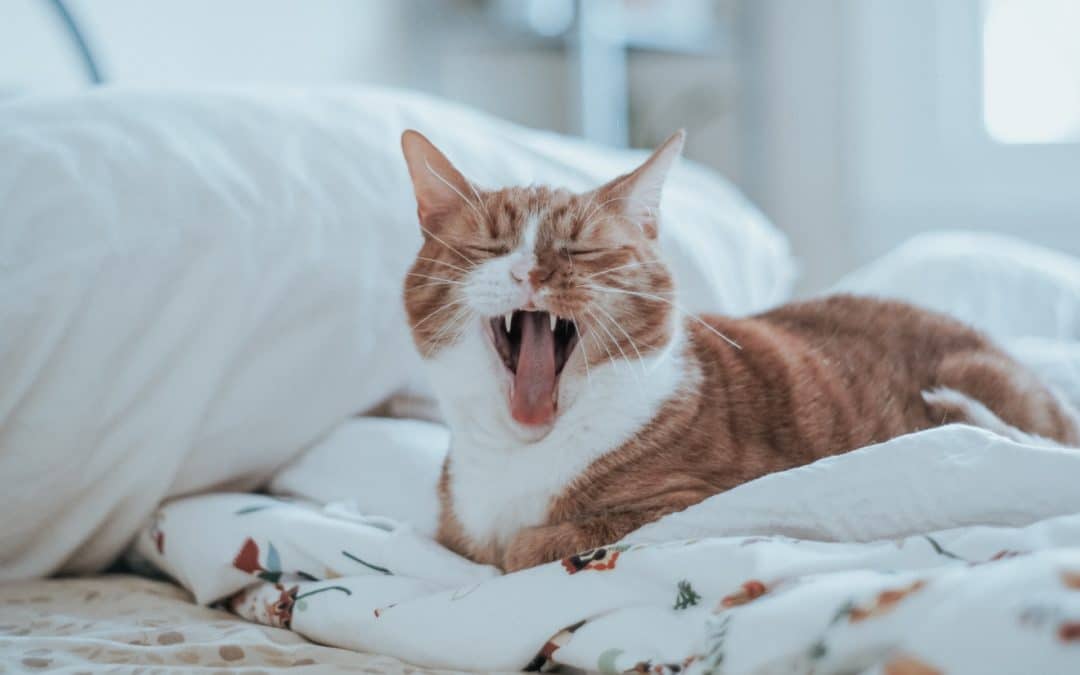If we told you that you need to brush your cat’s teeth every day, you’d probably think we were joking. Brushing a cat’s teeth sounds even more impossible than herding cats. There’s no way your cat would let you stick a toothbrush in their mouth…right?
The truth is, cats need dental care just as much as you do. Brushing their teeth can help prevent tooth loss as well as painful infections. But even if you do need to brush your cat’s teeth every day, how do you help them get used to it?
Start a Daily Grooming Ritual
Even though cats are naturally good groomers, most of them love a good brushing. They also love the one-on-one attention from their favorite human. Start with grooming your cat’s fur every day, and then gradually add tooth-brushing to the routine.
If you get the right toothpaste, it should taste like a treat. Toothpaste for cats comes in flavors like chicken and salmon, and while they might not make your kitty’s breath minty-fresh, they should at least taste good. You might have to try a few different flavors to find the one your cat likes best.
How to Brush Your Cat’s Teeth
Step 1: Get the Right Tools
First, you’ll need a toothbrush and toothpaste made specifically for cats. That way, the toothbrush will be the right size and shape, and the toothpaste will have safe ingredients.
WARNING: Never use your own toothpaste to brush your cat’s teeth. Most brands of toothpaste contain ingredients that are harmful to cats, such as xylitol.
Step 2: Introduce Your Cat to Toothpaste
- Start by putting a small amount of cat toothpaste on the tip of your finger, and letting your cat taste it.
- Then, with your cat on your lap, practice holding their head, gently opening their mouth, and lifting their lips to expose their teeth and gums.
- Next, try using your finger to rub some toothpaste on their teeth and gums.
Step 3: Introduce the Toothbrush
Once your cat gets used to you handling their mouth, try switching to a toothbrush. Start with the back teeth, and work your way forward. You’ll probably only be able to brush for just a few seconds at first. But as your cat grows more accustomed to having their teeth brushed, try to work up to brushing for a full minute.
Step 4: Reward and Repeat
After brushing, make sure to reward your cat with pets and tooth-friendly treats. Then repeat again the next day! Daily brushing will help prevent gingivitis and tooth decay, and it will also help keep dangerous infections from spreading to other parts of the body. And don’t forget to bring your cat to the vet for a dental checkup once a year.
Why Cats Need Dental Care
If you want your cat to live a long and happy life, dental care is very important. Many cats suffer from tooth loss—and the intense pain of a dying tooth—which makes eating difficult for the rest of their lives. And if a tooth gets infected, they might even need a tooth extraction.
Unfortunately, though, your cat can’t tell you if one of their teeth is hurting. Taking your cat to the vet who can diagnose and treat dental issues can improve your cat’s quality of life. And watching for changes in your cat’s behavior can help, too.
Signs of tooth pain in cats include:
- Not eating as much as they used to
- Only eating wet food
- Trying to swallow food without chewing
Veterinary Dentist in Gilbert, Arizona
Is your cat due for a checkup? Schedule a visit with us at Anasazi Animal Clinic. We’ll make sure your cat is in perfect health, teeth included! We can even show you how to brush your cat’s teeth, and recommend the best toothpaste and toothbrush for your kitty.
Just give us a call at 480-497-0505, or request an appointment online today.
Images used under creative commons license – commercial use (08/21/2023) Photo by Ayla Meinberg on Unsplash

